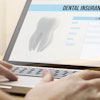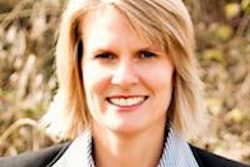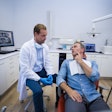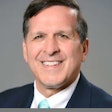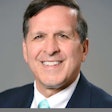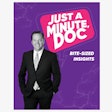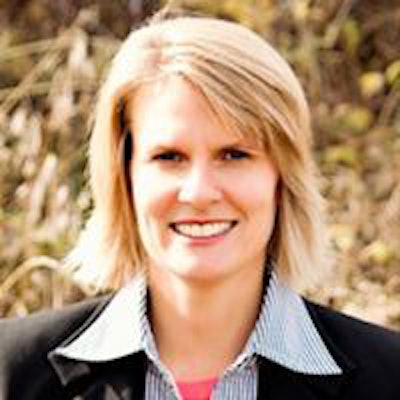
Both men and women die from heart trouble every year. Most people know this. Most people also know that heart disease is the leading cause of death in women and men. According to the U.S. Centers for Disease Control and Prevention, 600,000 people die each year because of heart disease. Furthermore, out of every four deaths in the U.S., one is from heart disease.
Oh baby, do we have heart troubles!
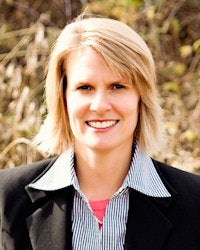 Lisa Knowles, DDS.
Lisa Knowles, DDS.The main risk factors for heart disease are diabetes, being overweight or obese, a poor diet, physical inactivity, and excessive alcohol use. Do you know of anyone who may be able to screen for these risk factors? Do you know of anyone who may see millions of people with decayed teeth that may indicate a poor diet? Hmmm?
Let me see, I got one: dentists!
But that leads me back to our own heart problems within our dental profession. Many of us don't have the heart to tell our patients that they are obese or eating the wrong foods. Moreover, if we do have the heart to do this, we often lack the communication finesse needed to discuss these issues. Moreover, we lack the training to convince patients to stop doing what they are doing so they will ultimately decrease their risk of heart disease.
It's not that hard to figure out; it's just hard to implement with a curriculum narrowly focused on science and mechanical skill mastery. We haven't been trained to be good at these things. Yet.
The trifecta of troubles
In this three-part series, I will address the "trifecta of troubles" in dentistry. This article covers the first one: heart troubles. The "trifecta of troubles" comprises three areas that dentists struggle with during their careers: their heads, hands, and hearts.
Without careful nurturing of each area, dentists end up unbalanced in their delivery of care. With a lack of balance in our own lives, we struggle to operate in a manner that encourages our teams to be in balance. This trickles down to an ineffective educational plan for patients to change their lifestyle patterns. In other words, it starts with us.
Finding the heart to say something
In airport security stations, there are signs everywhere encouraging us to travel safely and report suspicious behavior immediately: "If you see something, say something," posters remind us. The urgency not to get terrorized (or killed) helps us find the strength to say something to someone if a problem is suspected. However, heart problems seem less important. Maybe we think that it's someone else's job to report those things? Maybe we don't want to misidentify someone? Maybe we simply don't want to hurt anyone's feelings?
“Those of us standing guard are too often looking the other way.”
Mayday! SOS! Red alert!
We are dying from these diseases. We are being terrorized by these noncommunicable health diseases. And those of us standing guard are too often looking the other way. Sadly, some of us are not even aware of the problem.
So how do we find the heart to say something if we have the tender-hearted bone in our bodies? We must remember that our greatest strengths can lead to our greatest weaknesses. The fact that many healthcare professionals are empathetic and caring is positively necessary and desired. But when that kindness and caring blinds our judgment and impedes us from addressing a chronic disease, we are not doing our jobs effectively.
How do we say something?
Once we notice the problem and want to address noncommunicable health diseases, another skill set is needed. (The World Health Organization explains that noncommunicable diseases are cardiovascular diseases, such as a heart attack or stroke; cancers; chronic respiratory diseases, such as chronic obstructive pulmonary disease or asthma; and diabetes.)
Communication skills are needed to enter into an engaging conversation about health. My first recommendation is to attach the patients' health histories to their dental histories and presentation. If we dive into someone's health history without tying it to their dental history, they wonder why we are asking them about their medical problems. They feel violated, and they tend to close off. They think it's a physician's job to talk to them about their health; many are not used to dentists asking probing medical questions. So we must give them a reason. We must educate them about our knowledge and how the body is all connected.
Once we gain entrance into their medical world and connect the dots between medical and dental diseases, we have the opportunity to educate.
How do we convince them to change?
Unfortunately, there is no magic pill to instill behavioral modification. However, there are ways to improve our educational outcomes. Team role-playing is one method I find helpful. Some dental schools now use standardized patients to ensure that role-playing occurs before real-life patient interactions. Standardized patients are often amateur actors hired by the schools to act out different situations. Students are videotaped during the experience and a follow-up discussion ensues.
Role-playing is a tremendous way to practice these skills in our dental offices with our teams. Camera phones make it very easy to record these types of sessions. Hiring a facilitator is also helpful, but a team leader can be coached to adopt this facilitation role for the team.
Consequences of remaining silent
With heart disease killing 17.3 million people annually, I don't think we can wait much longer to fully engage as healthcare professionals. Furthermore, because the U.S. spends $2 trillion on healthcare each year, we have a financial incentive to find different ways to manage our health.
All hands on deck, dentists, before it's too late, or before we become part of the one in four. It starts with us -- in our hearts. We are needed.
Lisa Knowles, DDS, is the founder and CEO of IntentionalDental Consulting. For more information, contact her at [email protected] or 517-331-3688. Visit her blog at Beyond32Teeth.com or website at IntentionalDental.com.
The comments and observations expressed herein do not necessarily reflect the opinions of DrBicuspid.com, nor should they be construed as an endorsement or admonishment of any particular idea, vendor, or organization.


